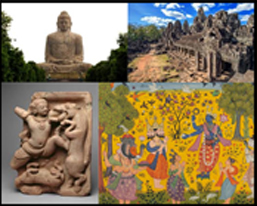| Serving
over 30 millions NRIs worldwide |
|
|||||||||||||||||||||||||||||
Proposed Museum of South Asian Heritage
Los Angeles/Nov 19, 2025 For quite some time, there has been an on-going discussion in our community for a proposed museum of South Asian heritage. So far, there does not seem to be a consensus in the community about the location of such a facility. Some people prefer it to be in Vancouver whereas others prefer to base it in Surrey. There are a lot of pros and cons to both locations. Hopefully, the Advisory Committee set up by the provincial government will come up with good recommendations in this regard. Regarding the heritage museum itself the South Asian community is very large and diverse. It covers a very vast area in the Indian subcontinent. Moreover, people of South Asian heritage are spread out in many countries like Fiji, Guiana, Trinidad Tobago, West Indies etc. Thus, it is going to be a huge challenge to accommodate such a vast region in a limited space.
In this context, I would like to emphasize that any proposed facility must recognize the unique contribution of the Punjabi community in general and Sikhs in particular to the growth and development of Canada. It should highlight the hardships and problems faced by our ancestors who set foot on Canadian soil around 140 years ago. As a matter of fact, the first immigrants to Canada were from Punjab. It has been reported that these Punjabis, mostly Sikhs had first arrived in the United States. In the mid 1880s, some of them came to Golden, BC via Columbia River that flows from north of Revelstoke to the Pacific Ocean near Portland, Oregon. In Golden, they worked in a sawmill. The Golden hospital has some of the names of these people as part of their records. They even built a Gurdwara in the Golden. Most likely, this was the first Gurdwara in Canada. In 1927, this mill burned down. Consequently, some of them returned to the States while others moved to the Vancouver area via CP Rail that was completed in 1885. The second wave of immigrants from Punjab came in early 1900s. Queen Victoria had invited several young Sikh soldiers to her Daimond Jubilee Celebration in London, England in 1997. After this celebration these Sikh soldiers decided to visit Canada before returning to Punjab. They travelled by train from Montreal to Vancouver and were treated very well. They were also very impressed by Canada’s hospitality, vastness and beautiful landscape. When they reached Punjab, they spread the good word about Canada. Consequently, between 1901and 1907 a lot of Punjabis took the chance to come to Canada. Many of them arrived in Canada in 1905 and 1906.Growing number of Chinese, Indians and Japanese immigrants to western Canada gave rise to racism, discrimination and violence against these immigrants. With growing public pressure, the Canadian government stopped immigration from China, Japan and India in 1907. These restrictions continued until the mid-1920s. The struggles, trials, and tribulations of them as well as those who followed them must be recognized in the proposed museum.
These early immigrants from Punjab were all Punjabis and mostly Sikhs. They have made a tremendous contribution to this country. Consequently, they deserve a very special space/recognition in any proposed museum of South Asian heritage. Also, let us not forget that Punjabi language and literature have also played an extremely important role that must be recognized in the proposed facility. Furthermore, the crucial role and excellent leadership provided by Khalsa Diwan Society (KDS), Vancouver to our community should also be taken into account. KDS has served as the strong anchor and a commendable advocate for our community all along. Balwant Sanghera
|



